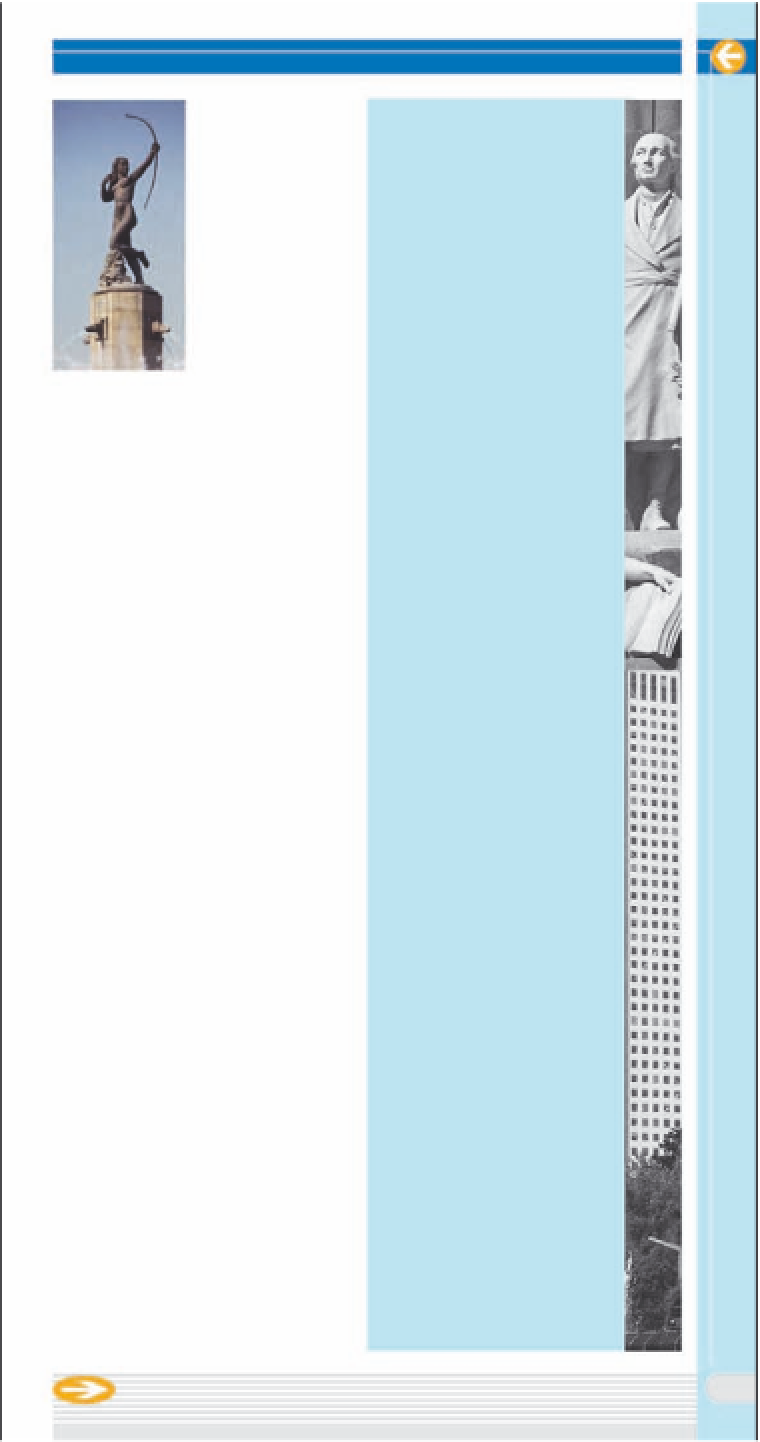Travel Reference
In-Depth Information
(
Fuente de
Paseo de la Reforma
by Foot and Turibus
Morning
Begin from
El Caballito
(see p75)
, at the corner of
Av Juárez and board the
Turibus
(see p104)
to the
Monumento a la
Revolución
(see p75)
north of the Reforma. Hop
off at stop #13 to visit
Museo Nacional de la
Revolución
(see p75)
and
also the
Museo Nacional
San Carlos
(see p75)
.
Back on the bus, take a top
deck seat to view the sky-
line and the
Monumento
de Colón
and
Monumento
a Cuauhtémoc
at the
glorietas
. A majestic palm
tree occupies the next
glorieta
. To the north is the
Bolsa Mexicana de
Valores
(see p45)
with its
glass dome between two
high-rise glass buildings.
Get off at stop #15 for
Monumento a la
Independencia
. Walk
south across Reforma into
the shopping and café
district of Zona Rosa. On
the right is
Mercado
Insurgentes
(see p52)
and
on the left is
Plaza del
Ángel
(see p78)
. Just
ahead is a great café,
Konditori
(see p79)
, where
you can stop for lunch.
Afternoon
Return to the Turibus stop
#15. Take a seat upstairs
and watch for the Roman
goddess Diana, the hunt-
ress, in the final
glorieta
standing atop
Fuente de
la Diana Cazadora
. Step
off the bus at stop #16
and head to the 52nd floor
of
Torre Mayor
(see p45)
for an incredible view of
Mexico City. Downstairs,
the Torre Mayor also has
trendy shops, boutiques,
and cafés. Stop for a cup
of
café con leche
, a special
Mexican coffee.
la Diana
Cazadora
A magnificent
statue of Roman
goddess Diana
the Huntress
adorns the
fountain in the
westernmost
glorieta
on the
Paseo de la
Reforma.
Sculpted by
John Olaguíbel, the bronze
statue weighs over a ton. The
voluptuous nude Diana created
much debate and controversy in
1942, and finally the artist
covered her loins with a bronze
covering, which remained in
place until 1967. The stone
fountain was designed by
architect Vicente Mendiola.
d
Paseo de la Reforma glorieta at Río
Rhin • Map G3
Fuente de la Diana
Cazadora
)
Museo Casa de Carranza
Venustiano Carranza was a
Mexican Revolutionary leader
and President of the Republic
from 1917-20. He was later
executed in Puebla on May 7,
1920. He lived in this 1908
building, inspired by French
architecture, for the last six
months of his life. Memorabilia
from Carranza's life, furnishings,
art, and a library of the
Constitution of 1917 fill 13
exhibition rooms. The museum
has an extensive photographic
collection which covers the
tumultuous period of the
Mexican Revolution. It includes
photos of the legislative council
that approved Mexico's present
constitution on February 5, 1917.
d
Río Lerma 35, Col Cuauhtémoc • Map
K3 • 5546-6494 • 9am-6pm Tue-Sat,
10am-5pm Sun • Adm • www.cnca.gob.
mx/cnca/inah/museos/sitio/dfsit.html
77
Sign up for DK's email newsletter on
traveldk.com




















































